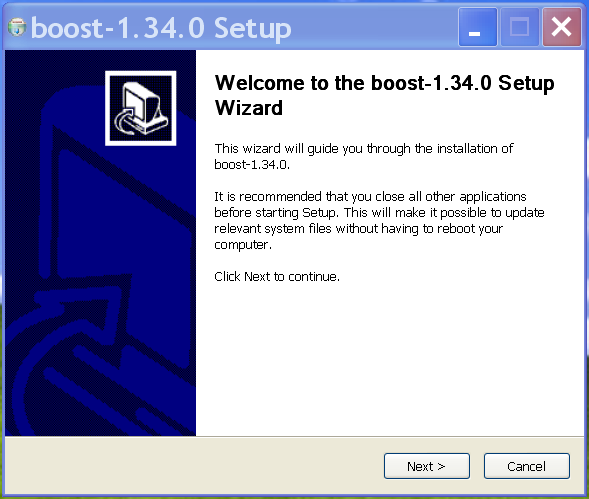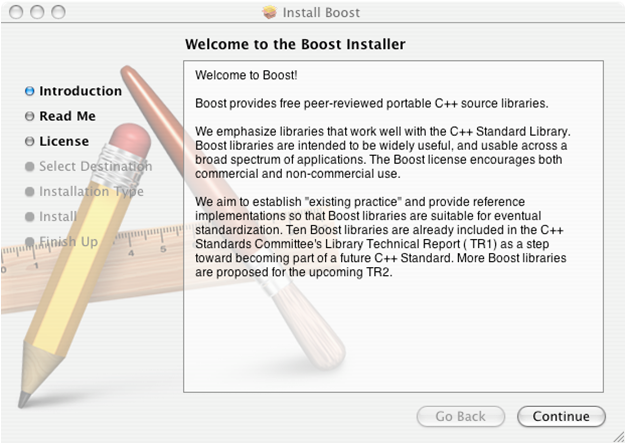Building a Binary Installer with CMake
CMake can easily build binary installers for a variety of platforms. On Windows and Mac OS X, CMake builds graphical installation programs. For other Unix operating systems, CMake currently builds tarballs and self-installing shell scripts. This CMake functionality, provided by the CPack program that is part of CMake, is used to create all of CMake's binary installers. We use CPack to build binary installers for Boost. To build a binary installer for Boost, follow these steps:
- Configure and build Boost using CMake.
- (Windows only) Download and install the Nullsoft Scriptable Install System (NSIS), which is used to create graphical installers on Windows. Unix users do not need to install any extra tools.
- Using the same development tools for building Boost, build the "package" target to create the binary installers.
- With Microsoft Visual Studio, build the target named
PACKAGE. - With makefiles, run
make package
- With Microsoft Visual Studio, build the target named
The output of the packaging process will be one or more binary packages of the form Boost-version-platform.extension. The type of package will differ from one platform to another:
- On Windows: The primary output is an executable (
.exe) package that provides a graphical installer. - On Mac OS X: The primary output is a disk image (
.dmg) that contains a graphical installer package. - On Unix: Packaging produces compressed tarballs (
.tar.gz) and a self-installing shell script (.sh)
| Windows Installer | Mac OS X Installer |
 | 
|
Attachments (2)
-
WindowsInstaller.png
(86.1 KB
) - added by 15 years ago.
Windows Installer for Boost
-
MacInstaller.png
(181.6 KB
) - added by 15 years ago.
Mac OS X Installer for Boost
Download all attachments as: .zip
